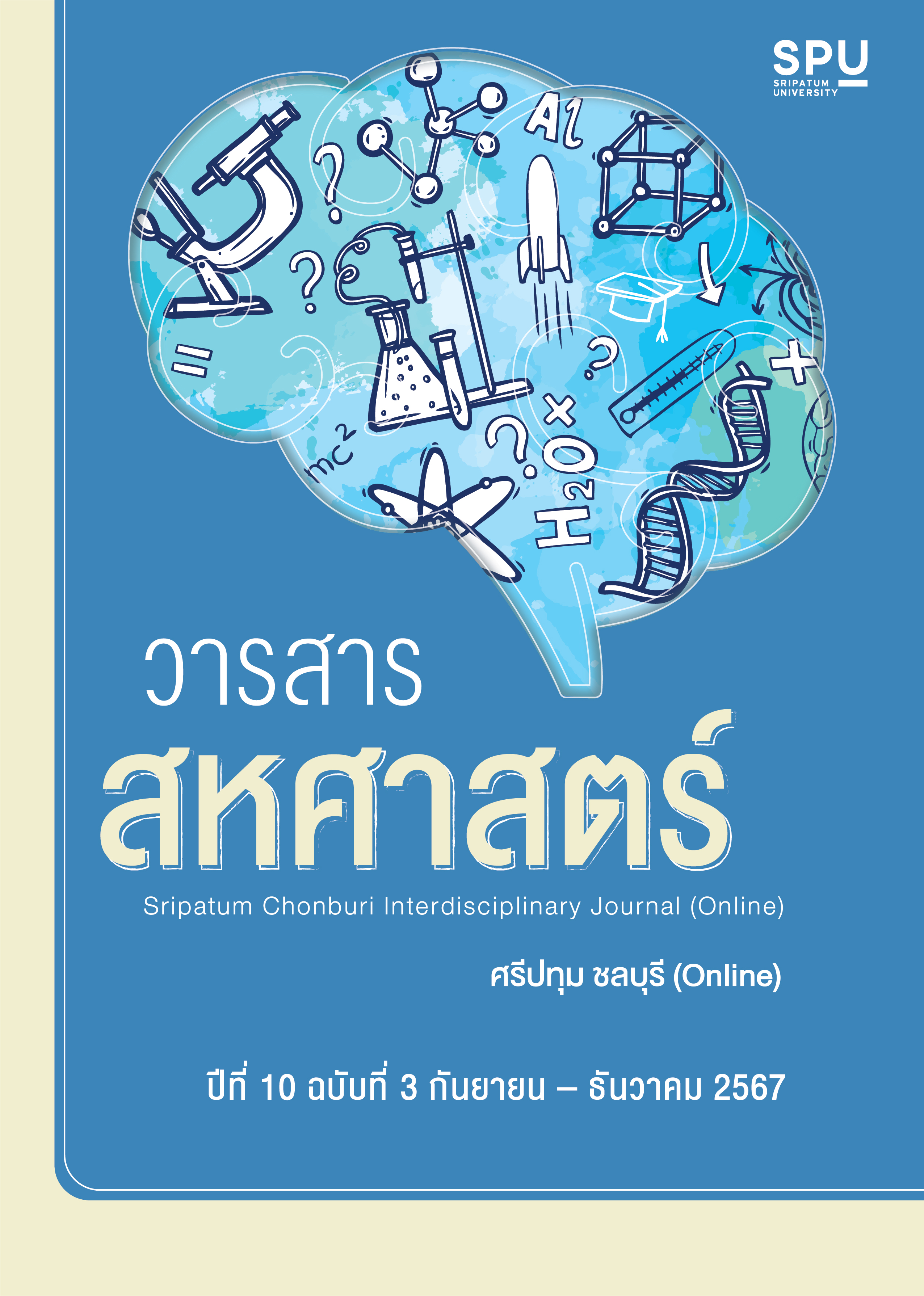HOW DO MULTISENSORY TEACHING STRATEGIES ENHANCE LITERACY SKILLS AMONG STUDENTS WITH LEARNING DISABILITIES IN INCLUSIVE CLASSROOMS?
คำสำคัญ:
Multisensory Teaching, literacy skills, learning disabilities, inclusive classroomsบทคัดย่อ
This article reviews the efficacy of multisensory teaching strategies in enhancing literacy skills among students with learning disabilities within inclusive classrooms. Multisensory strategies incorporate visual, auditory, and kinesthetic-tactile elements to address students' diverse needs, including native (L1) and non-native English speakers (L2). Research studies conducted by Taghvayi, Vaziri and Kashani (2012, pp. 1264-1269) and Sarudin, Hashim and Yunus (2019, pp. 3186-3194) have demonstrated the substantial benefits of integrating sensory pathways to improve reading accuracy, comprehension, and engagement in learning. Further research highlights the significant role of technology, such as iPads, in personalizing and enhancing the learning experience to better cater to individual student needs. The article also emphasizes the importance of training teachers in multisensory strategies to ensure effective implementation and to support an inclusive educational environment. Ultimately, it is suggested that multisensory teaching strategies not only make learning more accessible but also significantly improve literacy outcomes for students with learning disabilities, thereby fostering a more inclusive and effective educational setting.
เอกสารอ้างอิง
Boardman, K. (2020). An exploration of teachers’ perceptions and the value of multisensory teaching and learning: a perspective on the influence of Specialist Dyslexia Training in England. Education 3-13, 48(7), pp. 795-806.https://doi.org/10.1080/03004279.2019.1653349
Campbell, M. L., Helf, S. & Cooke, N. L. (2008). Effects of adding multisensory components to a supplemental reading program on the decoding skills of treatment resisters. Education and Treatment of Children, 31(3), pp. 267-295.
Celik Korkmaz, S. & Karatepe, C. (2018). The Impact of Multi-Sensory Language Teaching on Young English Learners' Achievement in Reading Skills. Novitas-ROYAL (Research on Youth and Language), 12(2), pp. 80-95.
Hettiarachchi, S. & Ranaweera, M. (2013). Story Boxes: using a multisensory story approach to develop vocabulary in children experiencing language-learning difficulties.International Journal for Cross-Disciplinary Subjects in Education (IJCDSE), 4(1),
pp. 1076-1081. https://doi.org/10.20533/ijcdse.2042.6364.2013.0152
Kamenopoulou, L. (2022). Inclusive education for learners with multisensory impairment: best practices and research priorities. New York, NY: McGraw-Hill.
Komalasari, M. D., Pamungkas, B., Wihaskoro, A. M., Jana, P., Bahrum, A. & Khairunnisa, N. Z. (2019). Interactive multimedia based on multisensory as a model of inclusive education for student with learning difficulties. In Journal of Physics: Conference Series, 1254(1), 012057.https://doi.org/10.1088/1742-6596/1254/1/012057
Lee, L. W. (2016). Multisensory modalities for blending and segmenting among early readers. Computer Assisted Language Learning, 29(5), pp. 1019-1034.https://doi.org/10.1080/09588221.2015.1129347
Milman, N. B. & Vanden Boogart, A. E. (2024). Differentiating Reading and Writing Instruction Across Content Areas With 1: 1 iPads in an Elementary School. Computers in the Schools, pp. 1-19.https://doi.org/10.1080/07380569.2024.2337649
Muvirimi, P. (2018). Chapter Four: Multisensory approach. Learning to Teach in an Inclusive Era: Methods of Teaching. New York, NY: Strategic Book Publishing.
Newman, I. (2019). When saying ‘go read it again’won't work: Multisensory ideas for more inclusive teaching & learning. Nurse education in practice, 34, pp. 12-16.
Park, S. (2022). Multisensory Alphabet Instruction for Young Children. Columbus, Ohio: The Ohio State University.
Sarudin, N. A. A., Hashim, H. & Yunus, M. M. (2019). Multi-sensory approach: How it helps in improving words recognition?. Creative Education, 10(12), pp. 3186-3194.https://doi.org/10.4236/ce.2019.1012242
Taghvayi, D., Vaziri, S. & Kashani, F. L. (2012). The effectiveness of integrative approach, Fernald multi-sensory technique on decrease reading disability. Procedia-Social and Behavioral Sciences, 69, pp. 1264-1269.https://doi.org/10.1016/j.sbspro.2012.12.060
Viji, B. & Raja, B. W. D. (2017). Preparing Teachers for Multisensory Teaching Strategy to Improve the Learning Outcomes of Students with Reading Disabilities. TJELLS| The Journal for English Language and Literary Studies, 7(4), pp. 57-63.



